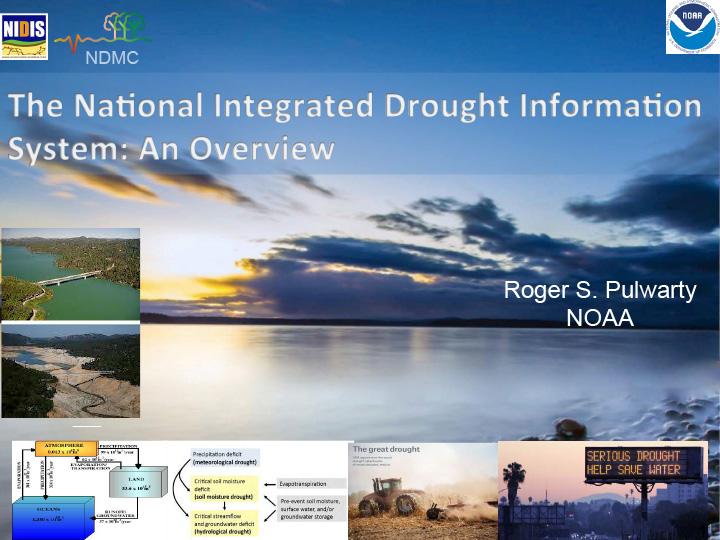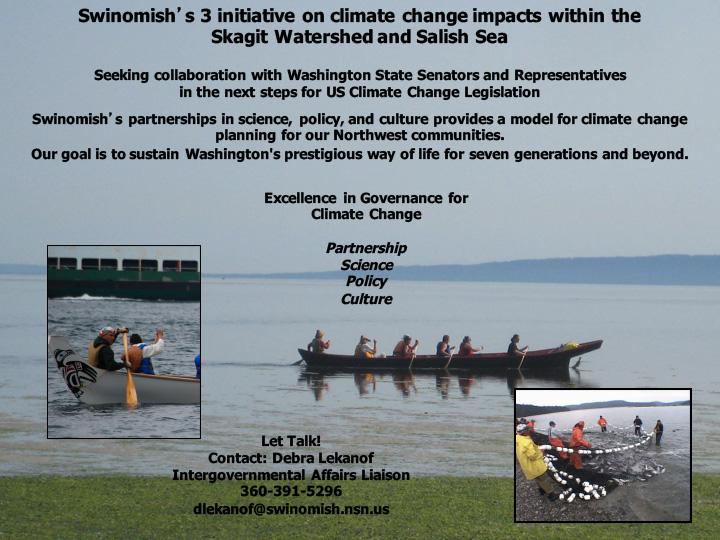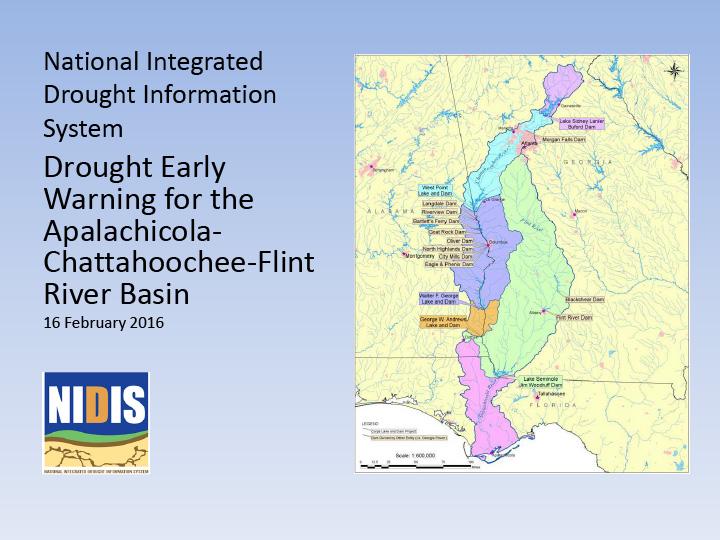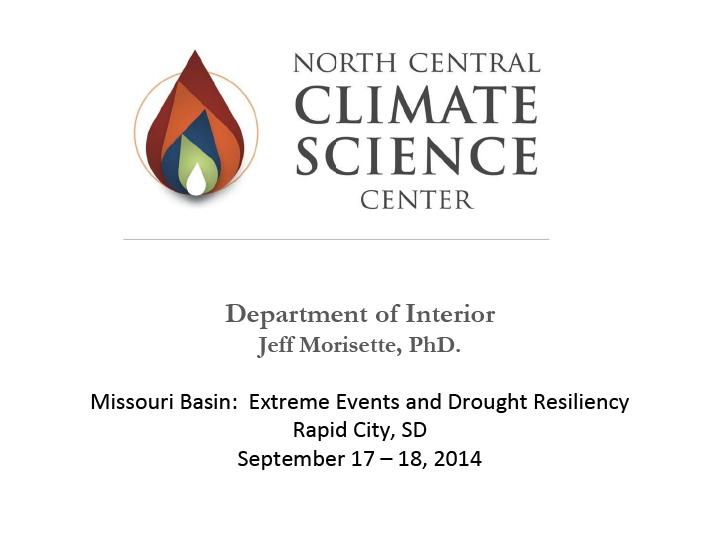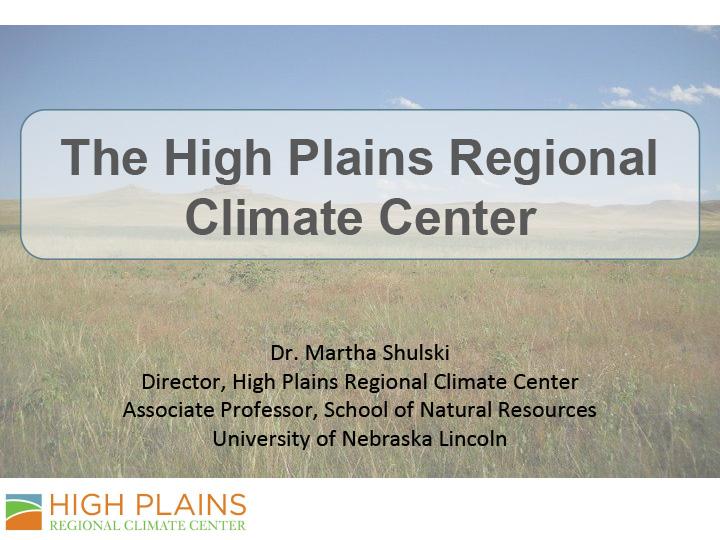Overview of NIDIS as of February 2016 from Director Roger Pulwarty.
A presentation that was given at the Tribal Climate Change Adaptation Planning & Inter-Governmental Coordination Workshop which took place October 5-6, 2010 in Boulder, Colorado. Presentation was given by Debra Lekanof of the Swinomish tribe of Native Americans. Talks about the issues facing the Swinomish tribe as a result of climate change and uses experiences from the reservation as a case study.
Briefing slides from February 16, 2016 ACF Drought Early Warning Webinar.
Presentation from the Extreme Events and Drought Resiliency workshop September 17-18, 2014 in Rapid City, South Dakota. Discusses how climate research organizations are organized regionally. Closes slideshow by touching on the role Traditional Knowledge can play in climate monitoring.
Presentation given at the Extreme Events and Drought Resiliency workshop in September 17-18, 2014 in Rapid City, South Dakota. Discusses the importance of monitoring for stream health and some of the pollutants and sources that are cause for alarm. Talks about some of the important types of data that are taken to gauge stream health and shows how this data is analyzed and turned into usable data.
Presentation that took place at the Extreme Events and Drought Resiliency workshop held September 17-18, 2014 in Rapid City, South Dakota. Deals with the groundwater on the Rosebud Sioux Reservation and some of the contaminants and its sources and briefly touches on strategies to mitigate these pollutants. Presentation also talks about fluctuations in aquifer levels over the years. The slideshow concludes by talking about the proposed Keystone Oil Pipeline and how it was moved from its original path that would have cut through part of the Rosebud Sioux Indian Reservation.
Presentation given at the Extreme Events and Drought Resiliency workshop held September 17-18, 2014 in Rapid City, South Dakota. Discusses extreme weather events that have occurred in the Missouri River Basin over the last decade and the damage they caused. Presentation also provides various resources for stakeholders that deal with weather and drought in the High Plains.
Presentation given at the Extreme Events and Drought Resiliency workshop that took place September 17-18, 2014 in Rapid City, South Dakota. Discusses the work done by the High Plains Regional Climate Center and how they take weather data and turn it into an end product that is usable by stakeholders.
Presentation given at the Extreme Events and Drought Resiliency workshop held September 17-18, 2014 in Rapid City, South Dakota. Discusses the Plains Cottonwood and how it is being adversely affected by the invasive Russian Olive. Presentation talks about some of the traditional uses of Plains Cottonwood and then uses data from a study on the Crow Reservation in southern Montana to show the impacts of invasive plant species on the native cottonwood.
Presentation given at the Extreme Events and Drought Resiliency workshop held September 17-18, 2014 in Rapid City, South Dakota. Presentation discusses the climate in the region where the Kickapoo Tribe resides, including extreme weather events and the major droughts that occurred in 2000 and 2003. Presentation goes on to talk about what is required in order for the tribe to be able to react to drought conditions that might spring up in the future.


